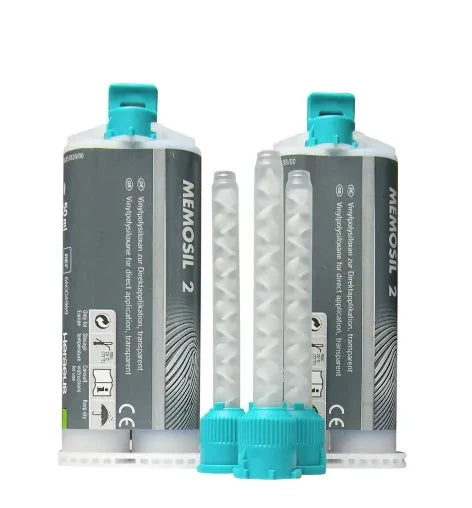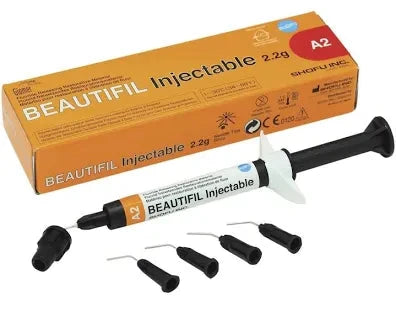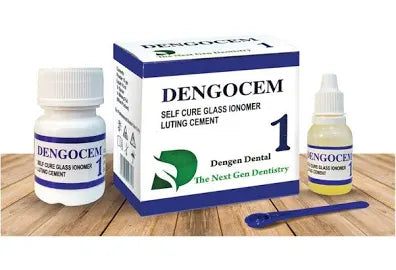Cost Analysis: GC 1 vs. CX 45GM Glass Ionomer Cements
Introduction
Glass ionomer cements (GIC) are crucial materials used in restorative dentistry. They bond chemically to both enamel and dentin, providing not just structural support but also releasing fluoride, which helps in cavity prevention. Choosing the right GIC is essential for effective dental procedures, ensuring both durability and patient satisfaction. In this post, we will compare two popular options: GC 1 and CX 45GM. This analysis will focus on their costs, ease of use, durability, and impact on patient outcomes, helping you decide which GIC is better for your practice.
Overview of GC 1
Product Features
GC 1 is a widely recognized glass ionomer cement known for its excellent adhesion properties and fluoride-releasing abilities. Its unique composition includes glass particles and polyacrylic acid, allowing it to create strong bonds with tooth structures. Typically, GC 1 is employed in various dental applications, such as restorations and as a base or liner in cavity preparations.
Cost of GC 1
The cost of GC 1 varies depending on the supplier and location. Generally, it falls within the mid-range price bracket for glass ionomer cements, often seen as affordable and offering good value compared to similar products. Its availability is significant, as it is commonly stocked by many dental suppliers. This reliable access further adds to its appeal for dental professionals looking for consistent quality.
Overview of CX 45GM
Product Features
CX 45GM glass ionomer cement is designed for versatility and ease of use, making it an excellent choice for many dental procedures. Its formulation comprises innovative materials that enhance its strength and bonding characteristics. CX 45GM is typically used for restorative processes, cavity lining, and even for cementing various dental appliances.
Cost of CX 45GM
The price of CX 45GM is generally competitive, and like GC 1, it is widely available through many dental suppliers. Its cost is comparable to other GIC products on the market, often regarded as offering exceptional value, particularly due to its user-friendly application process. Dentists appreciate not having to spend excessively while still securing reliable material for their procedures.
Durability Comparison
Durability of CX 45GM
The durability of CX 45GM is often cited as its standout feature. It performs well under varying conditions, maintaining its integrity even in challenging clinical environments. Users report impressive longevity for fillings and other restorations made with CX 45GM, providing confidence in its effectiveness over time.
Durability of GC 1
GC 1 also shows commendable durability in various clinical settings. It withstands daily wear and tear, but some users note that while it holds up well, it may not be as resilient as CX 45GM under particular stressors. Therefore, the longevity of GC 1 can vary based on specific usage scenarios, making it essential for practitioners to consider when making their selection.
Ease of Use
Ease of Use of CX 45GM
One of the reasons for the popularity of CX 45GM is its ease of use. The mixing and application process is straightforward, with minimal steps required to achieve optimal consistency. User feedback highlights its user-friendly handling, allowing dental professionals to apply it effectively even with minimal training.
Ease of Use of GC 1
Similarly, GC 1 is designed for ease of application, although some users suggest that it may require a bit more practice to get perfect results compared to CX 45GM. Nonetheless, most dental professionals find it manageable. Its mixing process is not overly complicated, making it accessible for a broader range of users.
Long-Term Effects
Long-Term Effects of GC 1
In terms of long-term effects, GC 1 can positively influence patient outcomes. The fluoride release helps prevent decay around restorations. However, some potential drawbacks include wear over time, which can necessitate replacements sooner than anticipated. Notably, the long-term success of GC 1 rests heavily on the application technique employed.
Long-Term Effects of CX 45GM
Conversely, CX 45GM shows promising long-term effects regarding patient outcomes. Many studies have reported high success rates and low failure rates, which bolster confidence in its performance. However, like any material, the longevity and effectiveness can depend on patient-specific factors and the skill of the dental professional applying it.
Patient Outcomes
Patient Outcomes with CX 45GM
Patient outcomes with CX 45GM have been encouraging, with numerous satisfaction surveys indicating high success rates. Testimonials reveal that many patients experience better comfort and fewer complaints regarding sensitivity or complications after procedures utilizing CX 45GM. Case studies often highlight its effectiveness, reinforcing its reputation.
Patient Outcomes with GC 1
While GC 1 also garners positive patient outcomes, user feedback presents a mixed picture. Many patients report satisfactory results over the short term, but there are some concerns regarding its long-term durability. Success rates are generally good, particularly when the material is well-applied by experienced practitioners.
Conclusion
In summary, both GC 1 and CX 45GM glass ionomer cements have their strengths and weaknesses. While GC 1 is a reliable option offering good adhesion and fluoride release, CX 45GM stands out for its durability and ease of use. The cost of both products remains competitive, making them accessible for various dental practices. Ultimately, the choice between which GIC is better depends on specific practice needs, including patient demographics and application techniques. By considering these factors, dentists can select the GIC that will yield the best outcomes for their patients.





0 yorum